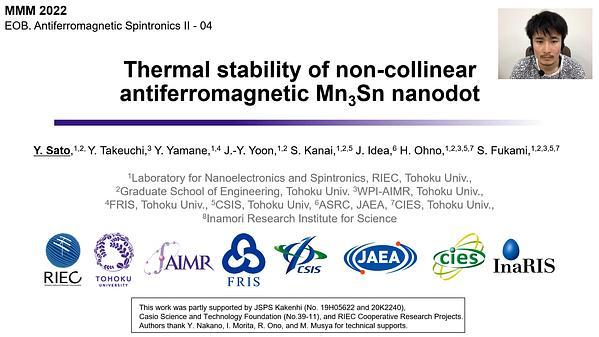Would you like to see your presentation here, made available to a global audience of researchers?
Add your own presentation or have us affordably record your next conference.
The discovery of two-dimensional van der Waals ferromagnets 1,2 has been long anticipated since the effects of spatial dimensionality on criticality were recorded 3,4. The potential applications of this new class of materials seem vast within the field of spintronics. Fe3GeTe2 has already proved highly efficient for spin-orbit torque switching 5, yet rich skyrmionic textures 6,7 and semi-metallicity 8 are also found within its roster of ever-growing phenomena. Fe5GeTe2, a related compound with a higher Tc 9, presents its own unique set of magnetic order that can be tuned with doping 10 and gate voltage 11. In a recent collaboration 12 we found spin-orbit torques within bulk Fe3GeTe2 due to a site preference that breaks the crystal’s centrosymmetry 13. Meanwhile, in Fe5GeTe2, we found skyrmionic textures present even up to room temperature 14. To understand the origins of these effects one must delve into the underlying electronic structure to provide a comprehensive understanding of the associated spin dynamics.
Using a variety of first-principles methods 12,14,15 we evaluate the exotic phenomena observed in both Fe3GeTe2 and Fe5GeTe2. In Fe3GeTe2 strong ‘hidden’ current-induced torques are harvested by each of the two-dimensional Fe3GeTe2 layers separately. Analysis of the electronic structure elucidates an interplay of spin and orbital degrees of freedom which have a profound impact on spin-orbit torques. A drastic difference in the behavior of the individual components of the torque results in non-trivial switching. In Fe5GeTe2 we use first principles methods in combination with atomistic spin-dynamics simulations to characterize the domain wall and subsequent spin textures. These distinct features from both compounds present an opportunity to tailor the spin and orbital dynamics with Fe concentration, opening a new era of van der Waals spin orbitronics.
References 1 C. Gong et al., Nature 546, 265 (2017).
2 B. Huang et al., Nature 546, 270 (2017).
3 R. B. Griffiths, Physical Review 136, 437 (1964).
4 N. D. Mermin et al., Physical Review Letters 17, 1133 (1966).
5 M. Alghamdi et al., Nano Letters 19, 4400 (2019).
6 B. Ding et al., Nano Letters 20, 868 (2020).
7 H.-H. Yang et al., 2D Materials 9, 025022 (2022).
8 K. Kim et al., Nature Materials 17, 794 (2018).
9 A. F. May et al., ACS Nano 13, 4436 (2019).
10 A. F. May et al., Physical Review Materials 4, 074008 (2020).
11 C. Tan et al., Nano Letters 21, 5599 (2021).
12 F. Martin et al., arXiv:2107.09420.
13 A. Chakraborty et al., Advanced Materials 34, 2108637 (2022).
14 M. Schmitt et al., arXiv:2204.11348.
15 T. G. Saunderson at al., arXiv:2204.13052.
